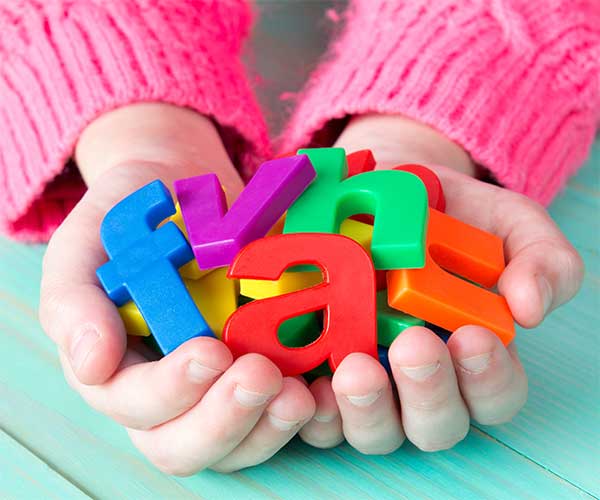Homeschool lesson planning and ideas
10 ways to max out homeschooling museum day trips
Museums are a veritable Aladdin’s Cave of wonders, packed to the gunnels with our world’s history. Young eyes light up in wonder and fascination as they take in literal bucket loads of new facts and information. One of the advantages of living in the UK is that many museums are free to enter – an educational gold mine at our fingertips!
One of the benefits of being a homeschooling parent is that you’ll have access to your local museum - one of your richest resources - seven days a week when most other children are holed up in school. This means, of course, no pesky queues to get in as the weekend so often brings, especially in the big city museums such as The British Museum in London.
1. Tap into the museum’s resources before you leave home
Before you leave home, make sure you hit the internet and research your destination museum. Almost every museum will have either a dedicated education department or a supply of resources tailored specifically to that museum and its exhibits. Many have questionnaires, activity trails and even workshops you can book your child on to.
2. Write a newspaper report or recount
Why not turn your day out into a literacy exercise and weave a real-life element into your teaching of key English skills. You could give your child a chance to write a newspaper report about something they learnt at the museum or about the day out itself. Alternatively, you could allow them to stretch their skills by writing a recount of the day.
Check out some of our literacy worksheets to help you plan the activities surrounding your museum visit:
3. Inspire creative writing
Keeping with the literacy theme, let’s take a more creative approach. Why not use your museum visit to inspire creative writing for your child? Learning with a real-life context gives children a tangible reason and inspiration for their writing and can really help to engage enthusiastic and reluctant writers alike!
You could challenge your child to write a story set within the museum. Why not get them to use their five senses during their time in the building and take a note of interesting adjectives they’d like to include in their creative description of the setting?
Alternatively, you could see which exhibits seem to particularly inspire and interest your child. Question them a little more about the exhibit. Perhaps they could write a poem about that prehistoric fossil they saw. Maybe that ancient mummy has inspired a short story?
Use our printable story writing frame here to help guide activities
4. Get arty!
Take a clipboard and some different tools, such as pencils, crayons and pastels, and let your child loose. They might want to practice some real-life drawing opportunities. Maybe you want to explore perspective and 3D features. Perhaps you want them to look closely at shading and museum display cabinets are ideal for this with their spot lighting!
Younger children might enjoy creating rubbings in some accessible areas of the museum. With art your imagination is the only limit so let them loose to see where their interests and creativity will take them!
5. Explore scientific concepts
Depending on what kind of museum you’re visiting, why not give your child some real-life experience in scientific concepts? Places like the Natural History Museum have a wealth of taxidermy and fossilised animals perfect for designing classification keys with your KS2 or KS3 child. Designing their own key or flow chart is a great open-ended activity that your child can take as far as they like and don’t need to be restrained by levels and ideas of what they should or shouldn’t be able to achieve – perfect for challenging their extended thinking!
Check out the huge array of science worksheets available to you from EdPlace. Depending what kind of museum your visiting it’s a great idea to work through some of the worksheets before or after you go to help your child to put their newfound knowledge and skills into a real-life context.
Check out all our science activities here
6. Inspire a research project
If your child can’t tear themselves away from the fossil exhibit at the Natural History Museum, why not harness that enthusiasm by setting them up with their own research project? You could challenge your child to plan and carry out an investigation, to write an information text or create a whole booklet on the topic.
You could use the trip to help them plan and inspire what their research topic will be about. They could photograph the artefacts to include in their research project. An independent research task is a great way to encourage your child to use a variety of information sources including the museum itself, libraries and reference books, writing letters or emails to experts and the internet.
7. Make the most of the maths: Dating/timelines
We’ve taken advantage of a museum visit to inspire creative and non-fiction writing, so it stands to reason that we’d want to break out the maths skills as well!
Why not create an empty fold-out timeline (paper and glue sticks at the ready!) and ask your child to plot different artefacts and exhibits onto their timeline. Through this activity they will not only start to develop their understanding on chronology and time, but also get some valuable practice in using scales to design the length of their timeline and how much space to use for each time frame.
Sticking with the theme of time, why not use your visit as an opportunity for some impromptu mental maths practice? If that ancient broach is dated to 948 AD, how many years old is it? How many years ago did Mount Vesuvius erupt and bury that bowl in Pompeii? You could always take some scrap paper and get those mental muscles working on their written calculation methods as well.
If you’re visiting a Roman museum or site, why not challenge your child by setting some maths problems using Roman Numerals? Can they find out during their visit what each numeral represents and solve maths problems using numerals instead of numbers?
Use our printable timeline here to help guide activities
8. Plan their own itinerary
Now we’re not suggesting that you should ignore all of the above suggestions, but, how about putting your museum visit in your child’s hands entirely? Challenge their research, planning and organising skills by giving them the job of planning your itinerary for the day.
Can they find out what there is to see at the museum and link it in with some of the subjects they study? Can they work out how much time you might need in each exhibit and make an itinerary for you both to follow throughout the day? Giving your child some real-life experience and planning skills that will not only put their education into their own hands, but will allow them to follow where their interests and passions take them and also give them the thrill of taking charge.
What’s the worst that could happen?!
9. Think outside the display cabinet!
There’s no doubt that the best bit about many museums is the artefacts and exhibits they contain. But did you ever take a moment to stop and appreciate the building that houses all of these precious items? Stop to appreciate the Greek Revival architecture of the British Museum, gaze in wonder at the breath-taking ceiling of the Hintze Hall in the Natural History Museum or marvel at the striking shape of the Imperial War Museum North.
Take a moment to encourage your child to look up from the display cabinets and take stock of the building around them. This is another great opportunity to explore some art through the medium of drawing or even photography. It’s a great opportunity to practice descriptive writing and to find out more about a building’s history and architecture.
10. Design your own museum
And last but not least, you could challenge your child’s critical thinking skills throughout the day. Ask them what they like best about a museum’s layout. Ask them why they think an exhibit has been set up that way.
You could challenge your child to come up with a set of success criteria for a museum: what does a museum need to do (i.e. inspire, educate, be accessible, etc)? Once you’re back home, challenge your child to use their own success criteria to design their own museum. What would they have in it, and how would they present their displays to the public?
This is another great open-ended challenge that could encompass everything from planning and design, to area and perimeter and persuasive writing skills. The sky’s the limit and you could make the project as long or short as you like!
Did you try out any of our ideas? Why not share your experiences with us on our Facebook page or on twitter and let us know how you spent your day at the museum!











